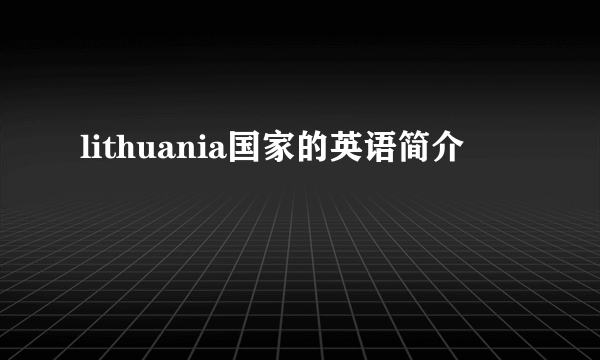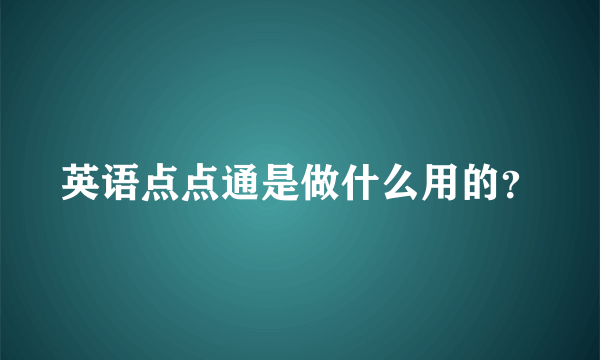lithuania国家的英语简介
的有关信息介绍如下:
来自http://en.wikipedia.org/wiki/Lithuania 用个代理,去维基看看吧。Lithuania, officially the Republic of Lithuania (Lithuanian: Lietuva; official — Lietuvos Respublika), is a country in northeastern[1] Europe. The largest of the three Baltic States situated along the Baltic Sea, it shares borders with Latvia to the north, Belarus to the southeast, Poland to the south, and the Russian exclave of the Kaliningrad Oblast to the southwest. Lithuania is a member state of the European Union since May 1, 2004.Contents1 History 2 Politics 3 Administrative division 4 Geography 5 Economy 6 Demographics 6.1 Ethnical diversity 6.2 Religion 7 Culture 8 Miscellaneous topics 9 See also 10 Notes and references 11 External links 11.1 Maps & GIS HistoryMain article: History of Lithuania First mentioned in a medieval German manuscript, the Quedlinburg Chronicle, on February 14, 1009, Lithuania became a significant state in the Middle Ages. The official crowning of Mindaugas as King of Lithuania on July 6, 1253 marked Lithuania's birth, as warring dukes united to support his reign. Later during the early (1316 - 1430) years of the Gediminids dynasty rule, the sate grew into a multi-ethnic Grand Duchy of Lithuania, which also incorporated the lands of present day Belarus, Ukraine, parts of Russia. Lithuania accepts christening in 1385 from Poland. By the 15th century, the Grand Duchy of Lithuania stretched across Eastern Europe from the Baltic to the Black Sea.When Grand Duke Jogaila was crowned King of Poland on February 2, 1386, Lithuania and Poland joined in a personal union, as both countries were ruled by the same Jagiellon dynasty. In 1569, Poland and Lithuania formally merged into a single state called the Polish-Lithuanian Commonwealth. In 1795, the Commonwealth was dissolved by the third Partition of Poland, which ceded its lands to Russia, Prussia and Austria. 90% of Lithuania was incorporated into the Russian Empire and 10% into PrussiaOn February 16, 1918, Lithuania re-established its independence. From July, 1918 until November of that year, Monaco-born King Mindaugas II was the titular monarch of Lithuania, until the country's parliament opted for a republican form of government. From the outset, territorial disputes with Poland (over the Vilnius region and the Suvalkai region) and Germany (over the Klaipėda region, German: Memelland) preoccupied the foreign policy of the new nation. During the interwar period, the constitutional capital was Vilnius, although the city itself was annexed by Poland (see History of Vilnius for more details). The Lithuanian government at the time was seated in Kaunas, which officially held the status of temporary capital.In 1940, at the beginning of World War II, the Soviet Union occupied and annexed Lithuania in accordance with the Molotov-Ribbentrop Pact. It later came under German occupation during which around 190,000 or 91% of Lithuanian Jews were killed, making one of the worst death rates of the Holocaust. Along with the retreat of the German army, Lithuania was re-occupied by the Soviet Union in 1945. During the 1940-1954 period of the Soviet occupation and national resistance, Lithuania lost over 780,000 residents; with an estimated 120,000 to 300,000 of that number killed or exiled to Siberia by the Soviets, while others choosing to emigrate.Map showing changes in the territory of Lithuania from the 13th century to the present dayFifty years of communist rule ended with the advent of glasnost, and Lithuania, led by Sąjūdis, an anti-communist and anti-Soviet independence movement, proclaimed its renewed independence on March 11, 1990. Lithuania was the first Soviet republic to do so, though Soviet forces unsuccessfully tried until August 1991 to suppress this secession, including an attack at Vilnius TV Tower on the nigth of January 13, 1991 that resulted in the death of 13 Lithuanian civilians. The last Russian troops left Lithuania on August 31, 1993 — even earlier than those in East Germany.On February 4, 1991, Iceland became the first country to recognize Lithuanian independence, and Sweden the first to open an embassy in the country. The United States of America never recognized the Soviet claim to Lithuania or to the other two Baltic republics.Lithuania joined the United Nations on September 17, 1991. On May 31, 2001, Lithuania became the 141st member of the World Trade Organization. Since 1988, Lithuania has sought closer ties with the West, and so on January 4, 1994, it became the first of the Baltic States to apply for NATO membership. On March 29, 2004, it became a full and equal NATO member and on May 1, 2004, Lithuania joined the European Union.PoliticsMore in-depth information on politics and government of Lithuania can be found at the Politics and government of Lithuania series. Current President of Lithuania Valdas Adamkus (right) meeting with Vice President of the United States Dick Cheney in Vilnius in May 2006Since Lithuania declared independence on March 11, 1990, it kept strong democratic traditions. In the first general elections after the independence on October 25, 1992, 56.75% of the total number of voters supported the new constitution[2]. Drafting the constitution was a long and complicated process. The president institution fuelled most heated debates. Drawing from the interwar experiences, politicians made many different proposals that ranged from strong parliamentarism to the United States model. Eventually a compromise semi-presidential system was settled[3].The Lithuanian head of state is the president, elected directly for a five-year term, maximum two terms consecutively. The post of president is largely ceremonial with functions of overseeing foreign affairs and national security policy. The president is also the commander-in-chief. The president, on the approval of the Seimas, also appoints the prime minister and on the latter's nomination, appoints the rest of the cabinet, as well as a number of other top civil servants and the judges for all courts. Judges of the Constitutional Court (Konstitucinis Teismas), who serve for nine year terms, are appointed by the President (three judges), the Chairman of the Seimas (three judges) and the chairman of the Supreme Court (three judges).The unicameral Lithuanian parliament, the Seimas, has 141 members who are elected to four-year terms. 71 of the members of this legislative body are elected in single constituencies, and the other 70 are elected in a nationwide vote by proportional representation. A party must receive at least 5% of the national vote to be represented in the Seimas.Administrative divisionMain article: Subdivisions of Lithuania Lithuania is subdivided into 10 counties and 60 municipalitiesThe current administrative division was established in 1994 and modified in 2000 to meet the requirements of European Union. Lithuania now has a three-step admisnitrative division: Lithuania is divided into 10 counties (Lithuanian: singular — apskritis, plural — apskritys) that are later subdivided into 60 municipalities (Lithuanian: singular — savivaldybė, plural — savivaldybės) which consist of over 500 elderates (Lithuanian: singular — seniūnija, plural — seniūnijos).The counties are ruled by county governors (Lithuanian: apskrities viršininkas) who are appointed by the central government. These officials ensure that the municipalities adhere to the laws of Lithuania and the constitution. They main goal is to oversee the local governments and how they implement the national laws, programs, and policies[4].Municipalities are the most important unit. Some municipalities are historically called "district municipalities", and thus are often shortened to "district"; others are called "city municipalities", sometimes are shortened to "city." Each municipality has its own elected government. In the past, the election of municipality councils occurred once every three years, but now take place every four years. The council elects the mayor of the municipality and other required personnel. The municipality councils also appoint elders to govern the elderates. There is currently a proposal for direct election of mayors and elders, however that would require to amend the constitution[5].Elderates are the smallest units and they do not play a role in the national politics. They were created so that people could receive necessary services close to their homes, for example, in rural areas elderates register births and deaths. They are most active in the social sector: determining the needy individuals or families and distributing welfare or organizing other relief[6].The current system of administrative division receives frequent critisism as too bureaucratic and ineffective. Significant complains are made about the number of counties since they do not have much power wested in them. One proposal is to create four lands, a new administrative unit, the boundaries of which would be determined by the ethnographic regions of Lithuania. The benefit would be that the lands are naturally formed and not decided by bureaucrats or politicians[7]. Another of the proposed solutions involve reducing the number counties so that there would be five in total, each based in one of the five largest cities with population of over 100,000[8]. Others complain that elderates have no real power and receive too little attention; they could potentially become local initiative communities which could tackle many rural problems[9].GeographyMain article: Geography of Lithuania Physical map of Lithuania. Click on the image for better resolution. A hotel in rural area - a sign of increasingly popular rural tourismLithuania is situated in the Northern Europe and is the largest and most populous of the Baltic states, it has around 99 kilometres (61.5 mi) of sandy coastline, of which only about 38 kilometres (24 mi) faces the open Baltic Sea. Lithuania's major warm-water port of Klaipėda lies at the narrow mouth of Curonian Lagoon (Lithuanian: Kuršių marios), a shallow lagoon extending south to Kaliningrad. The main river, the Nemunas, and some of its tributaries carry international shipping vessels.Lithuanian landscape is glacially flat, except for morainic hills in the western uplands and eastern highlands that are no higher than 300 metres (1,000 ft), with the highest point being found at Juozapinės at 292 metres (958 ft). The terrain features numerous lakes, Lake Vištytis for example, swamps, and a mixed forest zone covers 30% of the country. The climate lies between maritime and continental, with wet, moderate winters and summers. According to some geographers, Lithuania's capital, Vilnius, lies a few kilometres south of the geographical centre of Europe.Lithuania consists of the following historical and cultural regions:Aukštaitija - literally, the "Highlands" Samogitia (Lithuanian: Žemaitija) - literally, the "Lowlands" Dzūkija (Lithuanian: Dzūkija or Dainava) Suduvia (Lithuanian: Sūduva or Suvalkija) Mažoji Lietuva - Lithuania Minor, also known as "Prussian Lithuania" (Prūsų Lietuva). Now most of it is under control by Russia (Kaliningrad Oblast). EconomyMain article: Economy of Lithuania Vilnius Financial Center is a symbol of rapid economic growth of LithuaniaIn 2003, prior to joining the European Union, Lithuania had the highest economic growth rate amongst all candidate and member countries, reaching 8.8% in the third quarter. In 2004 (2005), a 6.6% (7.5%) growth in GDP reflected impressive economic development. Prior to 1998, Lithuania was the Baltic state that conducted the most trade with Russia; however after the 1998 Russian financial crisis most of the trade Lithuania conducts within the European Union.Lithuania is a member of the World Trade Organization, and the European Union. According to officially published figures, accession to the EU in 2004 reduced unemployment to 3.1%. EU membership fueled booming economy, increased outsourcing into the country, boosted tourism sector. The litas, the national currency, has been pegged to the Euro since February 2, 2002 at the rate of EUR 1.00 = LTL 3.4528, and Lithuania is expected to switch to the Euro on 1 January 2009.Klaipėda port is the only port in Lithuania and is vital to its economyLithuanian income levels still lag behind the rest of the older EU members, with per capita GDP in 2006 at 56% of the EU average. Like other countries in the region (Estonia, Latvia) Lithuania also has a flat rate of tax rather than a progressive scheme. However, at 33% of income, the tax rate is considerably higher than that of its neighbours and some suggest that this, combined with low wages, may be a factor influencing the current trend of mass emigration to Western Europe, something that has been made legally possible as a result of accession to the European Union in 2004[10]. The Ministry of Labour estimated in 2004 that as many as 360,000 workers may have left the country by the end of that year, a prediction that is now thought to have been broadly accurate. The impact is already evident: in September 2004, the Lithuanian Trucking Association reported a shortage of 3,000-4,000 truck drivers. Large retail stores have also reported some difficulty in filling positions[11]. As of July 1st personal income tax will go down to 27% and in 2008 to 24% .DemographicsMain article: Demographics of Lithuania The great yard of Vilnius University, the oldest university in Eastern Europe. About 70% of high school graduates continue their studies in universities and colleges The oldest wooden church is located in Palūšė. Lithuania has strong Catholic traditions.Ethnical diversity85% of the Lithuanian population are ethnic Lithuanians who speak the Lithuanian language (one of two surviving members of the Baltic language group), which is the official language of the state. Several sizable minorities exist, such as Poles (6.7%), Russians (6%), and Belarusians (1.1%).Poles are the largest minority, concentrated in southeast Lithuania (the Vilnius region). Russians are the second largest minority, concentrated mostly in two cities; they constitute a minority in Vilnius (13%), Klaipėda (20%) and in the town of Visaginas (30%)Because of prolonged Russian rule and Soviet occupation, most Lithuanians are bilingual in Russian. According to the Eurostat poll about 80% of the Lithuanians can hold a conversation in Russian and almost all are familiar with the most general phrases and expressions. Nowadays, most Lithuanian schools teach English as a first foreign language, but students may also study German, or, in some schools, French. Schools where Russian and Polish are the primary languages of education exist in the areas populated by these minorities.ReligionThe historically predominant religion is Roman Catholicism. The Roman Catholic Church has been the majority confession since the Christianisation of Lithuania in the 14th century AD. No less than 79 % of Lithuanians are Roman Catholic. Ancient churches, chapels and roadside chapels express the historically Catholic sentiments of the Lithuanians. Since 1990 church attendance in Lithuania, unlike in Poland, more or less plummetted. Only about 14 - 15 % of the total population attend Mass weekly, even though some rate it at about 40 %. Lowest scientific polls indicate, that around 13 % attend Mass weekly, while about 50 % attend Mass at all major holidays. [1] Some voices however claim church attendance is even lower. They allege it is as low as 1.5 %[citation needed], which would make it lower than in the most secularized countries in the world. Prior to about 1993 to 1995 the Roman Catholic Church was an influential factor in the country, and some priests actively led resistance against the Communist regime and, after the independence, against socialism and liberalism, especially in ethical questions.The local Lithuanian Catholic anti-communist resistance shrine Hill of Crosses, upon which thousands of Latin rite crosses were erected or placed, is located near the city of Šiauliai. During the late 1800s the erecting of Latin crosses upon the mentioned hill was forbidden by the Russian Czarist Russian Orthodox authorities. During the 20th century the Soviet authorities also forbade such explicit religious symbols. The crosses were crushed in 1961 by a legion of tractors and bulldozers, but despite Soviet prohibitions, Lithuanian Roman Catholics continued to put small crucifixes and larger crosses up on this Hill of the Cross. Pope John Paul II visited the hill during his visit to Lithuania, primarily because it is a sign of anti-Communist Catholic resistance as well as a Roman Catholic religious site.The diverse Protestant community (1.9 % of the total population) is much smaller than the Roman Catholic Church; protestants are scattered all over the northern and western parts of Lithuania. Lithuania was historically positioned in between the two German-controlled states of Livonia to the north and the protestantized formerly monastic, Teutonic State of Prussia to its south. From those two regions in 16th century Lutheran Protestantism started to spread into the country. After 1945 Lutheranism in the country has declined.Baptist and Evangelical Protestant churches, as well as most of those close to Calvinism, were only founded after 1990.The country also has minority communites of Eastern Orthodoxy (mainly among the Russian minority), to which about 4.9 % of the total population belong, as well as of Judaism, Islam and Karaism (an ancient offshoot of Judaism represented by a long-standing community in Trakai), which together make up for another 1.6 % of the population.



